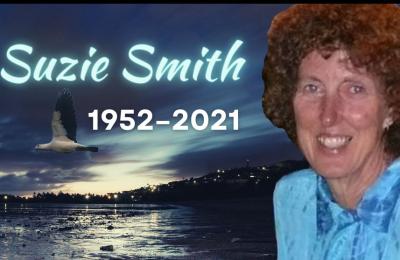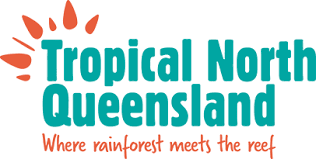
Yabullum Nature Refuge –in memory of Suzie Smith (1952-2021) - Wildlife Australia Guide
URPoint Details
Suzie Smith and Pat Turner decided to set aside part of their Murray Valley farm and wild property aside as a nature refuge in the late 1970s and early 1980s.
The couple had always left untouched a large lagoon and adjacent forest on the property , which Suzie later established as the Yabullum Nature Refuge.
Subsequently, she donated this property, located in the hinterland between Innisfail and Ingham -- to the Indigenous Protected Area of the Girringun Region.
Read on to learn more about this marvellous conservationist, who sadly passed away too soon in 2021 after a lifetime of service as a school teacher and hard-working environmentalist across Queensland's northern tropics ...
Naturally gifted ... Suzie Smith 1952-2021
Story from Widllife Australia magazine
Introduction
When Suzanne Smith (she preferred the friendlier Suzie) – co-founder and long-time office-bearer of the Wildlife Preservation Society of Queensland Cassowary Coast and Hinchinbrook Branch – died peacefully in Tully Hospital on December 27, after a long struggle with cancer, Australia lost one of its truest and most abiding champions of our natural and cultural heritage. Suzie Smith took part in many of North Queensland’s most critical conservation actions, often in leadership roles, over the past half-century. Her hard work, and leadership-by-example, helped inspire new generations of environmentally-minded people across Northern Australia and beyond. It is important for Wildlife Australia to not only highlight some of her achievements, but to also explain how she managed so many projects throughout her extremely active life. Perhaps a key to her success, according to her friends, is that she always set aside time to enjoy nature.
SUZIE SMITH was a beloved and respected figure in the north, and beyond, enriching so many lives as a teacher, a dedicated voice for the environment and always a kind, loyal and generous friend.
According to her close friends, Suzie Smith was at her very best in the face of adversity. She inspired others by dedicated action, often over long periods of time. This was especially true in her work with the Wildlife Preservation Society of Queensland (WPSQ) Cassowary Coast and Hinchinbrook Branch.
“No greater example of this could be found than in Suzie’s friendship and support for our patron, the late Margaret Thorsborne, through very difficult times – Arthur Thorsborne’s death, the turbulent Port Hinchinbrook campaign, the aftermath of Cyclone Yasi and Margaret’s own failing health. It was nothing short of magnificent,” Suzie’s friends wrote in tribute.
Born in Brisbane in 1952, Suzie came to Tully State High School as a young English and history teacher in the mid 1970s. There she met her life partner, Pat Turner, moving to live on his family property at Murray Upper, where they established a tropical fruit orchard. Combining the demands of teaching with working on the farm, and caring for her many animals, meant hard work but it was a life and a community into which Suzie fitted very comfortably.
With Pat Turner she made enduring connections with the people of the Murray Valley and living ‘on country’ was how she saw her place there. The couple had always left untouched a large lagoon and adjacent forest on the property, which Suzie later established as the Yabullum Nature Refuge. Subsequently, this became an Indigenous Protected Area.
As teachers, Suzie and Pat brought to the school their strong conservation ethic and their commitment and friendship with the Aboriginal community, introducing local Aboriginal language and cultural activities, backed-up by resources they themselves developed.
“In all aspects of her teaching Suzie was committed and inspirational, respected for her innovation, kindness and genuine interest in her students. This is strongly reflected in the way many past students still speak of her,” Suzie’s friends wrote.
Directly involved in conservation
In 1980, inspired by the poetry and environmental commitment of Judith Wright, co-founder and first president of WPSQ, Suzie called a meeting of interested parties to suggest forming a local branch. Adding to Suzie’s enthusiasm was her recent attendance at the 1980 World Wilderness Congress in Cairns (2nd WWC) where she had heard from an incredible array of Australian and international speakers including scientists and environmentalists Laurens van der Post, Jean Dorst, Ian Player, Madame Laurence de Bonneval, Geoff Mosley and Ray Arnett.
The 2nd WWC was a turning point for Australian conservation. The conference was opened by then Australian Prime Minister Malcolm Fraser, and delegates from 25 countries acted upon many issues of international wilderness and nature conservation. It was the event at which Prime Minister Fraser recommended the Great Barrier Reef be included on the World Heritage list and, subsequently, specific areas were brought under protection and management of the Great Barrier Reef Marine Park Authority. Areas of virgin rainforest in Queensland were also put forward and later protected under park status by theQueensland Government of then-Premier, Joh Bjelke-Petersen. Bob Brown, president of the Tasmanian Wilderness Society, brought international attention to the issue of wilderness conservation in Tasmania for the first time at the WWC.
Significantly, the 2nd WWC cultural program focused on contemporary Australian nature art, as well as on the dance, song and artwork of the Aboriginal and Torres Strait Islander culture. It is easy to see now how the WWC was such an important influence on Suzie Smith, later putting what she learned into personal action.
A diverse range of local people attended that first WPSQ branch meeting, including some of her own students, which led to the formation of the Tully Branch of WPSQ (now the Cassowary Coast and Hinchinbrook Branch). With Pat Turner as the inaugural president, it soon became a dynamic force on the local scene.
Margaret and Arthur Thorsborne, long-time committed conservationists with a passion for Hinchinbrook Island, were present at the next meeting. Both had been involved with WPSQ since the Society’s early days before moving to North Queensland from the Gold Coast. Suzie’s growing friendship with the Thorsbornes, and with Margaret especially, was one of immense and mutual value.
Protecting Hull River and Kennedy Bay
One local landholder who had attended that first meeting was canegrower, Joe Galeano, who brought with him a vision to protect the Hull River from source to sea.
This wild river had patches of reserves, crown land and fish habitats along its length, and entered the sea at the southern end of Kennedy Bay, then a Recreation, Water and Camping Reserve (Res 229).
Kennedy Bay had historical significance, as the starting point of the 1848 Edmund Kennedy expedition to Cape York, and was backed by pristine lowland rainforest, a key habitat for cassowaries. Here, then, was an opportunity to make a difference. Seeking protection of the Hull River and the Bay became the first major campaign of the branch.
At the same time the branch was also supporting the wider movement to declare the wet tropical rainforests a World Heritage area, while locally it was also seeking to increase protection for the endangered cassowary and working with the farming community to protect riparian vegetation.
In 1991, the 10-year campaign for Kennedy Bay and the Hull reached a successful conclusion when most of the river’s catchment, and the bay itself, became protected as the Greater Hull River National Park. The strong positive response to this outcome from the local community gave Suzie and the branch great heart.
But this was no time for either Suzie or the branch to rest on their laurels. In the very same year a new campaign was prompted by Dr Steve Van Dyck’s rediscovery of the mahogany glider in lowland forests south of Tully. Protection of this endangered species and its habitat became a major branch focus and remains so to this day.
Inspirational conservation
Her friends wrote that through all these campaigns, and those that followed, Suzie Smith represented the branch with dignity, her approach founded on consensus, teamwork and involvement with the community. Her strong communication skills gave Suzie the ability to write concise, factual and compelling letters and submissions, and to engage positively and effectively with the public.
The latter took many forms: mounting displays at local shows and markets, visiting schools and developing resource material or introducing visiting scientists or conservationists to local land-holders to discuss and encourage habitat protection.
Always working as a team member, Suzie was nonetheless frequently the instigator and driving force behind the branch’s activities and, for more than 40 years, she remained an essential and committed member of the branch.
“Moreover, Suzie was a good friend of other WPSQ Branches in the north, loved to see them working together and was a constructive and valued participant at the annual Northern Branches Get-Togethers from 1986 to 2005. Until her cancer re-appeared in 2019 she had talked of bringing the remaining branches together again,” Suzie’s friends wrote.
Suzie’s involvement with her own WPSQ branch and its campaigns did not stop her from volunteering her time and skills to other organisations in the region.
At the time of her death she was the current president of both the Alliance to Save Hinchinbrook, which focusses on conservation issues along the greater Hinchinbrook coast, and the Friends of Ninney Rise. She had worked tirelessly with the Friends to establish and manage this important heritage site, birthplace of the twin campaigns to save the rainforest and the reef.
In 2011 Suzie joined the re-established National Mahogany Glider Recovery Team at a critical moment for the species, when the gliders’ habitat had been devastated by Cyclone Yasi. For the last four years she served as the team’s chairperson, a role which brought her into a close working relationship with Terrain Natural Resource Management (Terrain NRM), a community-based environmental management organisation helping to increase the resilience of the rainforests, reefs, landscapes and local communities of Australia’s Wet Tropics region.
As a trustee of the Thorsborne Trust, Suzie Smith was also dedicated to ensuring the future of the annual Brook Islands pied imperial-pigeon counts, for which the Trust provides 50 percent of the funding.
Worked through her pain
Despite the personal heartbreak of her partner Pat Turner’s death in 1998, Cyclone Yasi’s almost total destruction of her orchard in 2011, and her own cancer surgery and treatment, Suzie remained deeply involved with conservation projects and issues, at both a planning and a hands-on level to the very end.
This could range from talking to the decision-makers – within or outside government – to revegetating wildlife corridors, or engaging the new generation in practical conservation.
“And she never forgot how important it always is to get out into the bush and enjoy all it has to offer us,” her friends wrote.
The body of Suzie’s work, extending through decades of service to her community and the environment, was rightly recognised through a Wet Tropics Cassowary Award, a Cassowary Coast Regional Council Australia Day Award and WPSQ’s Margaret Thorsborne Award. Some would say it was regional political biases that stopped an Australian of the Year nomination, for her environmental and educative work, progressing further than it did.
“Suzie was an inspiring teacher inside and outside the classroom, and a precious and constant friend and colleague,” her friends wrote. “She will be remembered for her passion and compassion, her kindness and courage, and for her remarkable inner strength, seemingly endless capacity for hard work and a straightforward manner, often laced with humour.
“These qualities were the foundation of her significant legacy. She will be sorely missed.”
From Suzie Smith’s friends
This tribute was shaped from the words of Suzie Smith’s long-time friends and colleagues including Daryl Dickson (WPSQ Cassowary Coast-Hinchinbrook), Liz Downes (WPSQ Townsville), Carol Muller (WPSQ Sunshine Coast, previously WPSQ Tully), with extra contributions from Judy Murphy (Cassowary Coast Regional Council Nursery Volunteer Group), Karman Lippitt (Girringun Indigenous Protected Area Coordinator), Keith Smith (Queensland Department of Environment and Science),
ends
- Type:
- Wildlife
- Establishment year:
- 1975
















